Altitude Versus Coincidence Rates
Seattle to Snoqualmie
08/18/2017
Abstract
Flux rates were compared at several different altitudes. Flux rates at higher altitudes were significantly higher.
Introduction
When cosmic ray particles strike an atom in the upper atmosphere of the Earth, the particles energy is distributed among a spray of new particles, which, in turn, produce new particles through further collisions and decays. (See figure 1.) This process continues for many generations, producing mostly electrons and muons by the time the shower reaches the Earth's surface. (See figures 2 and 3.) This experiment is designed to measure the flux of particles arriving at locations that vary in altitude by approximately 1000 meters.
Procedures
Two sets of Fermilab cosmic ray shower particle detectors (see figure 4) were packed into the back of a crimson 2011 Suburu Outback, and driven to Snoqualmie Pass (Washington) at an altitude of 909.015 meters. We first tested the voltages of each detector to be sure that there was no change due to car travel. Adjustments were made as necessary. We collected data with a coincidence of 2 over 1 minute intervals. We recorded coincidences and geometries after operating detectors for about 15 minutes. We then traveled on I90 Westbound and repeated the procedure 4 more times at successively lower elevations. These elevations were 552.69m, 456.04m, 103.998m, and 30.48m.
Results
Our data indicates that the the flux at 909 meters was about 50% higher than at 30 meters (21 Hz compared to 14 Hz). See figure 5. Analysis of time over threshold showed no difference between the highest and lowest altitudes.
Figures
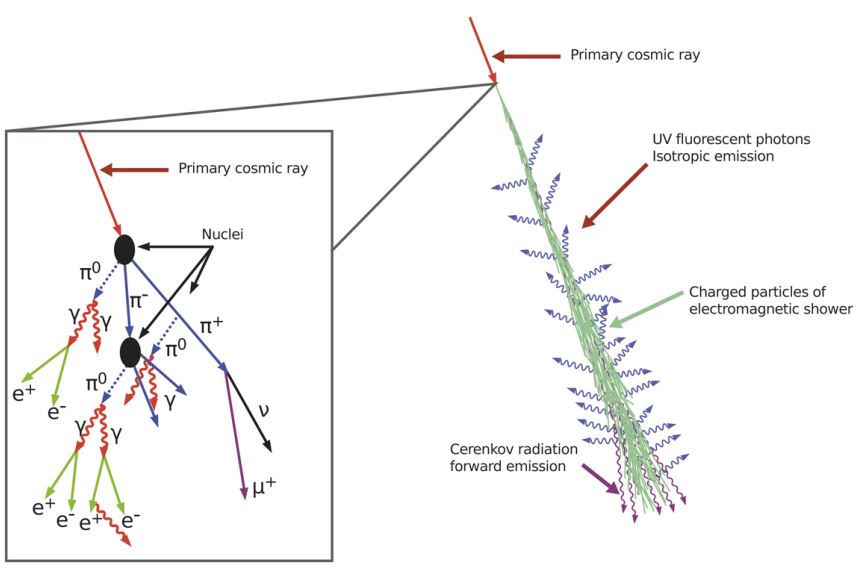
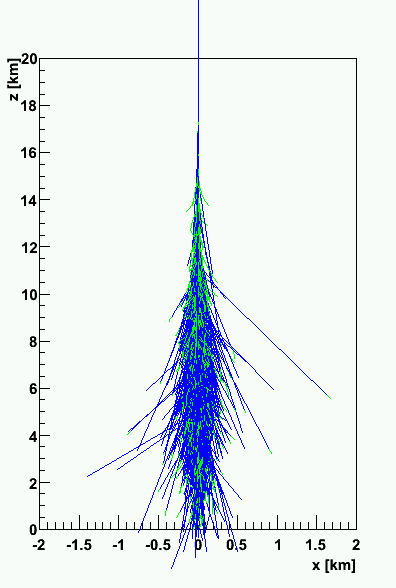
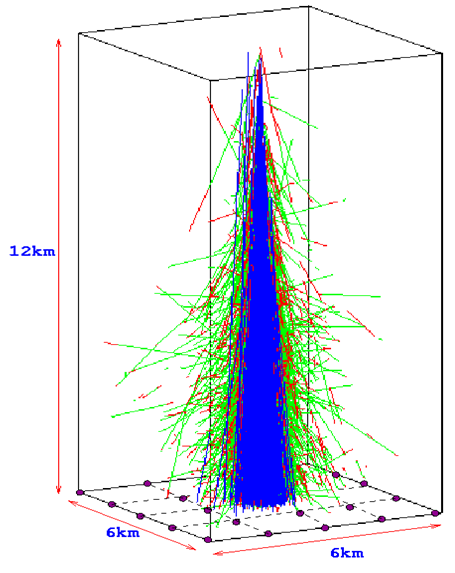
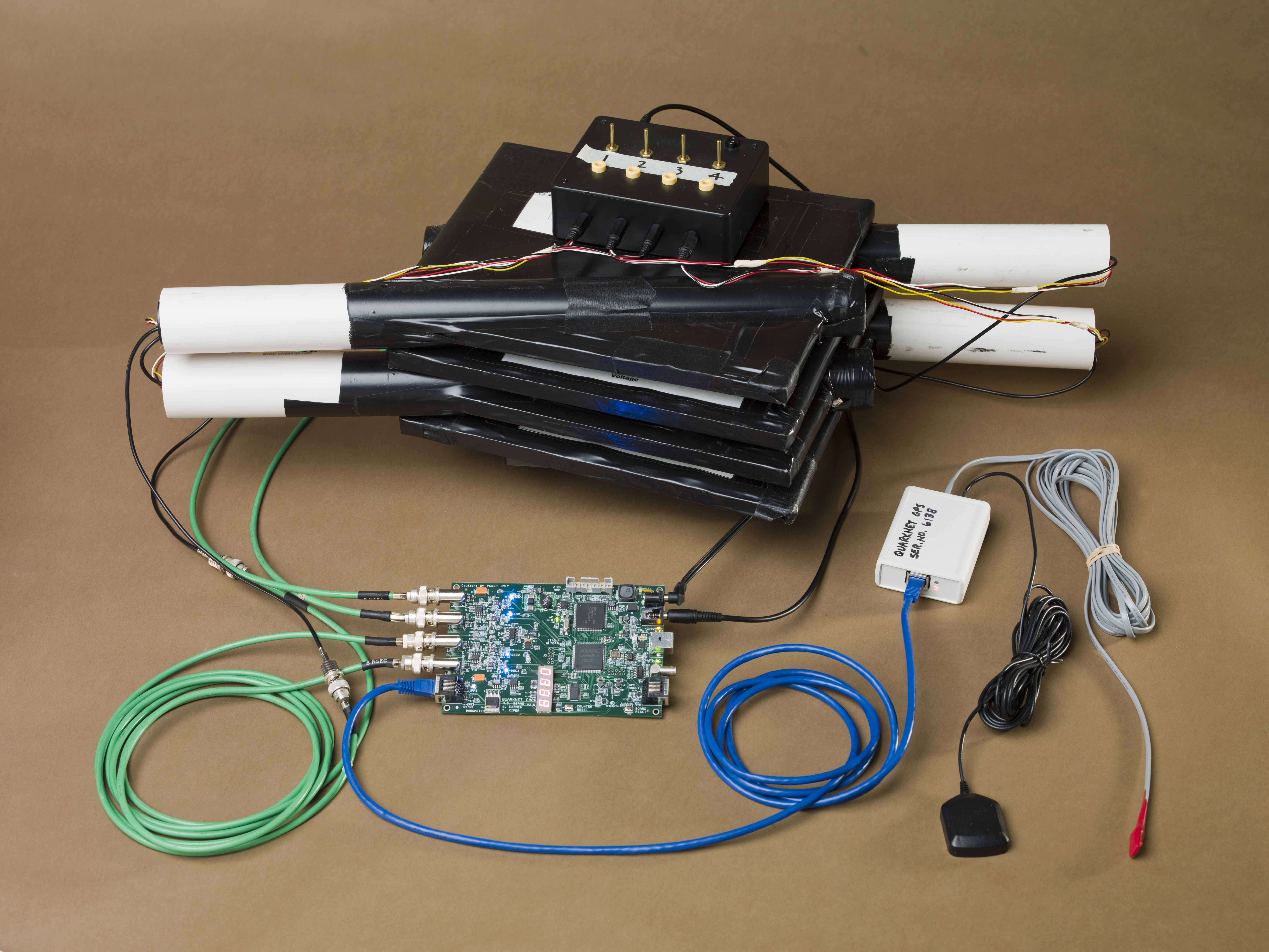
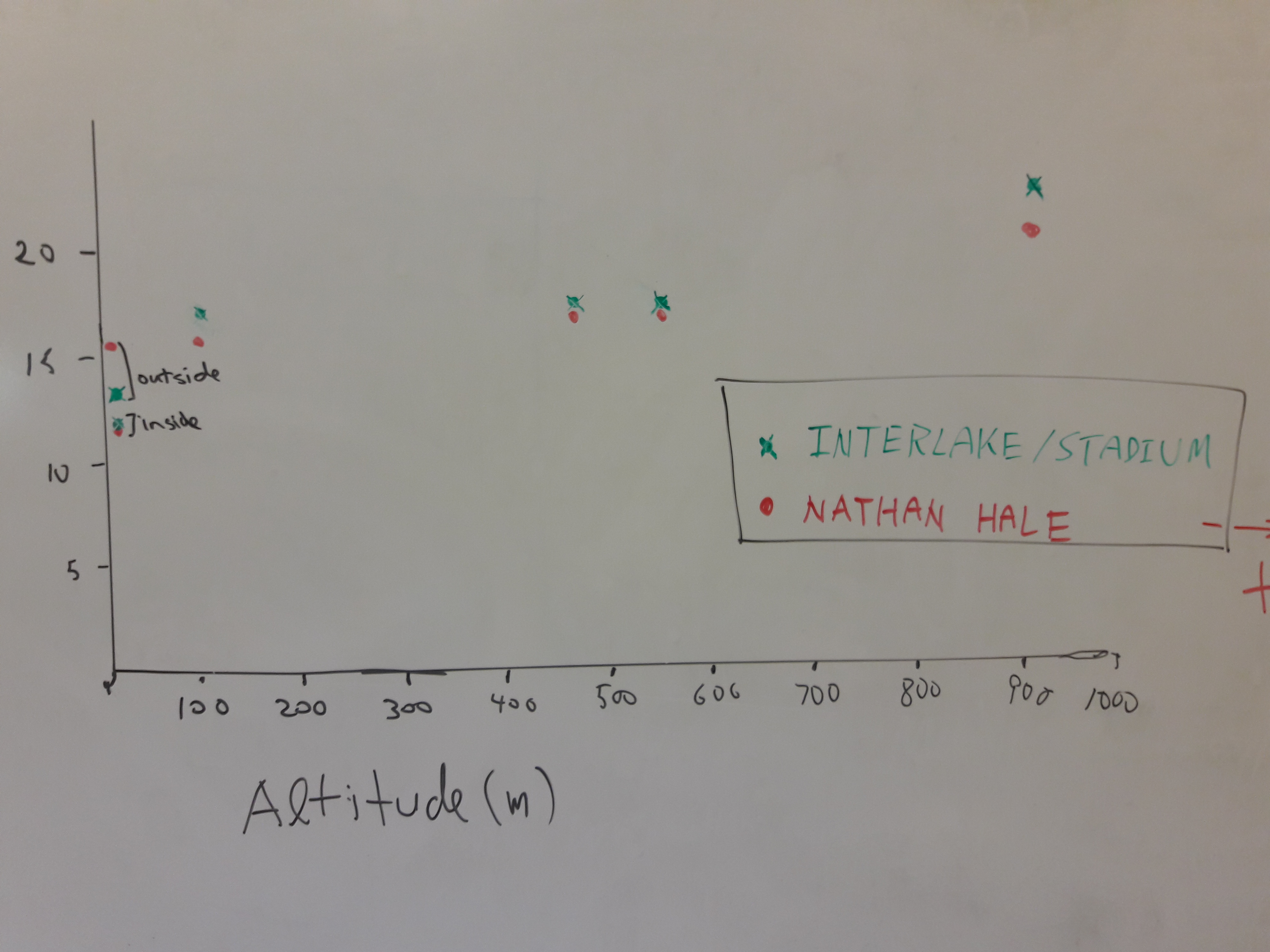
Figure 5. Altitude versus Flux Rate





Discussion and Conclusions
Bibliography